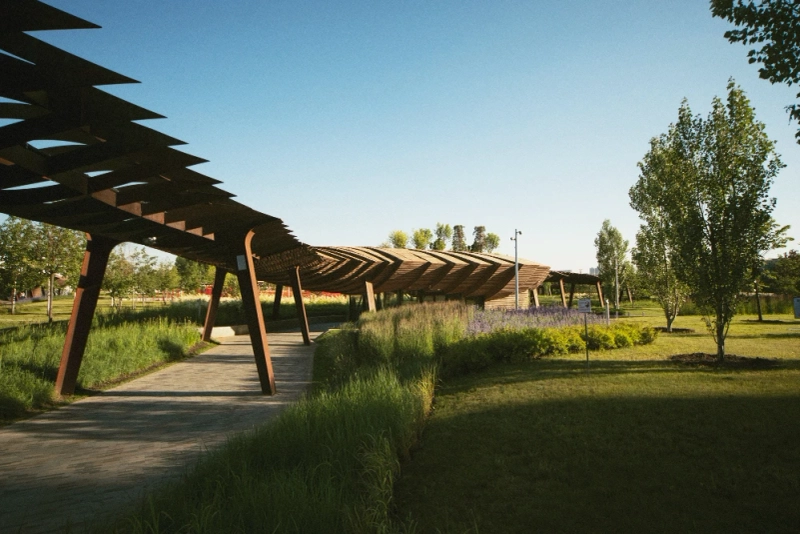When managing a commercial property, maintaining its landscape is a vital part of preserving curb appeal, tenant satisfaction, and property value. But high-quality landscaping doesn’t have to break the bank. With smart planning and strategic choices, you can achieve a well-maintained, attractive exterior while staying within budget.
In this blog, we’ll share practical tips to reduce landscaping costs without compromising on quality or professionalism.
1. Start with a Clear Landscape Plan
One of the biggest mistakes property managers make is operating without a solid landscaping plan. A well-designed, long-term plan will:
- Prioritize key visual areas
- Minimize unnecessary features
- Choose cost-effective materials
- Establish a predictable maintenance schedule
Having a blueprint helps you avoid last-minute changes, which often lead to higher expenses.
2. Choose Low-Maintenance Plants
Opt for native and drought-resistant plant varieties that require less water, fewer chemicals, and minimal upkeep. These plants thrive in local conditions and are naturally resistant to pests and disease, reducing the need for costly interventions.
Examples include:
- Ornamental grasses
- Perennials like lavender or coneflowers
- Evergreen shrubs
Over time, the reduced water and labor requirements can save a significant amount.
3. Install Efficient Irrigation Systems
Water is one of the most expensive ongoing costs in landscaping. To cut expenses:
- Install drip irrigation systems that deliver water directly to plant roots
- Use smart controllers with weather sensors
- Regularly check for leaks and adjust seasonal watering schedules
An efficient irrigation system can reduce water usage by up to 50%, leading to substantial savings.
4. Reduce Lawn Areas Where Possible
While lawns can look appealing, they are costly to maintain. Consider replacing large turf areas with:
- Mulched garden beds
- Decorative gravel or stone
- Native plant groupings
This not only cuts water usage but also lowers mowing and fertilizing costs.
5. Use Mulch Strategically
Mulching not only improves appearance but also:
- Retains soil moisture
- Suppresses weeds
- Regulates soil temperature
Using organic mulch reduces the need for herbicides and frequent watering, saving both money and labor.
6. Invest in Preventive Maintenance
Spending a little now can save a lot later. Regular maintenance prevents issues from escalating into major repairs. This includes:
- Pruning trees before limbs become hazardous
- Removing weeds before they spread
- Cleaning and inspecting irrigation systems
Preventive care reduces emergency costs and prolongs the life of your landscape features.
7. Hire a Reputable Landscaping Partner
It might be tempting to go with the cheapest bid, but low-cost contractors often cut corners. Instead, look for a provider that offers:
- Transparent pricing
- Proactive communication
- A proven track record with commercial landscaping services
A quality provider can help you identify savings opportunities and avoid costly mistakes.
8. Schedule Seasonal Maintenance Wisely
Tailor your landscaping tasks to each season to prevent over-servicing. For example:
- Mow less frequently during slow growth periods
- Aerate and fertilize only when beneficial
- Time pruning to optimize plant health
Strategic scheduling ensures your property looks its best with minimal wasted effort.
9. Reuse and Recycle Where Possible
Sustainable practices can reduce waste and costs:
- Compost plant trimmings for use as fertilizer
- Reuse rocks or bricks in new designs
- Shred tree branches for mulch
These methods reduce disposal costs and contribute to eco-friendly landscaping.
10. Monitor and Adjust the Budget Regularly
Track your landscaping expenses throughout the year. Review:
- Monthly invoices
- Seasonal variations in cost
- Return on investment for upgrades
Use this data to refine your budget and identify areas for further savings.
Conclusion
Saving money on commercial landscaping doesn’t mean cutting corners. With thoughtful planning, smart plant choices, efficient systems, and proactive maintenance, you can achieve a beautiful and functional landscape on a reasonable budget. Partnering with experienced professionals in commercial landscaping services also ensures long-term value and reliability.
Put these strategies into action today and enjoy a landscape that reflects both quality and fiscal responsibility.



